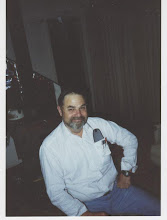Driving a Dead Cow
©Ken Harris, 2008
It was a dark and stormy winter afternoon in the 1990s in North San Juan, California. One of our short-yearling steers lay dead in the mud, stiff and ungainly. This was a disagreeable event at a disagreeable time in a disagreeable place.
Our “ranch” lay on two horizontal planes joined by five hundred feet or so of more or less 45º real estate. On the upper plane sat our house, on the lower plane a pasture and a seasonal stream. In between, on a bulldozer enhanced level patch of ground, sat our barns and a fattening pen, protected by large madrone and bull pine trees and lots of manzanita and Scotch broom brush. But the trees and brush didn’t offer sufficient protection, for the steer lay dead in the field of mud we called our fattening pen. Joanne, Bill Brown, a man whom we occasionally hired to help us do grunt work, and I glumly surveyed the scene as the rain whipped in our faces and dripped down the backs of our slickers.
We had to figure out what to do with this large, dead animal. We couldn’t just leave him there for the coyotes, buzzards, flies and microbes. The carcass would perfume the valley for weeks.
We had to get him out of his mud puddle and off to some place where we could bury him. Unfortunately, we couldn’t get our 4-wheel drive pick-up anywhere near the carcass without taking out a side of the fattening pen and driving on serious mud. Even if we took out the side of the pen, mud driving is a minor art form in itself. From a previous experience I knew that chains just dig you in deeper and faster.
At last we came up with a plan. Bill and I tied two long ropes around the dead steer’s head and then the three of us rolled the carcass onto its back and pointed it in the direction of the entrance to the fattening pen. Then Bill and I looped our ropes over our chests and arms and began tugging like two mules breaking sod. Joanne stood behind with a hind hoof in each hand, like a pioneer woman gripping plough handles, keeping the steer on its back and giving some direction to our efforts. She steered as Bill and I strained, hopping the steer’s head wouldn’t pop off before we got to where we could attach him to the pick-up.
Success! We got a whole carcass all the way to the pick-up. The rain and wind were just as bad, but my arms were so sore I didn’t even notice. We towed the animal downhill to the level pasture and Bill and I grabbed shovels. Seems you never have a backhoe when you need one.
Of course we had to bury the animal. We couldn’t cut it up for steaks and ribs because we didn’t know why it had died, basic knowledge you really want to have about your food.
Monday, July 14, 2008
Subscribe to:
Post Comments (Atom)

No comments:
Post a Comment